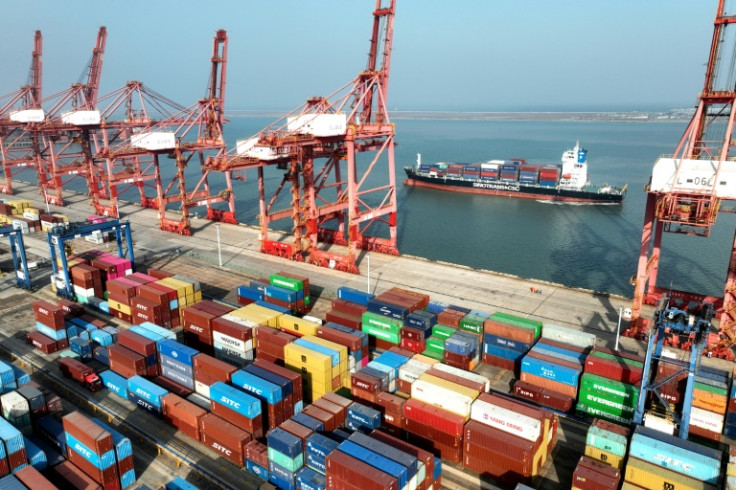China Says Exports Rise For First Time In Seven Months

Chinese exports rose in November for the first time in seven months, officials said Thursday, as the country navigates a troubled recovery from the Covid-19 pandemic.
However, the reading compares with a low base from last year when authorities were still wedded to a zero-Covid policy that hammered output and business activity, while a surprise drop in imports highlighted weak consumer activity at home.
Overseas shipments edged up 0.5 percent on-year to $291 billion, the General Administration of Customs (GAC) said, marking their first increase since April.
The figure was much better than analysts' forecasts and followed a 6.4 percent slump in October.
"The improvement in exports is broadly in line with market expectation," said Zhiwei Zhang, president and chief economist at Pinpoint Asset Management.
But while exports were now seeing "sequential growth", he added that "it is unclear if (they) can contribute as a growth pillar into next year".
"The European and US economies are cooling. China still needs to depend on domestic demand as the main driver for growth in 2024," he told AFP in a note.
Chinese exports -- long a key growth driver -- have largely been in decline since last October except for a short-lived rebound in March and April.
Shipments to the United States plummeted nearly 14 percent last month while those to the European Union plunged 11 percent.
But exports to Russia jumped more than 50 percent, underscoring Beijing's economic rapprochement with its staunch ally despite its invasion of Ukraine.
Imports painted a bleaker picture, sliding 0.6 percent to $224 billion in November and marking a return to contraction.
They had seen a surprise jump in October, bucking a forecast sharp drop and marking the first month of year-on-year growth since late last year.
It was hoped the rise could be a signal that consumer sentiment was recovering.
"Domestic demand is not really improving, even as we compared it to a low base last year," Woei Chen Ho, an economist at United Overseas Bank, told Bloomberg News.
"There is also no discernible improvement trend in exports despite a slightly better than expected export growth," she added."Taken together, it suggests a weak recovery trend in China."
The world's second-largest economy expanded a moderate 4.9 percent in the third quarter, slightly less than Beijing's five percent target, which is one of the lowest in years.
Officials have struggled to sustain a recovery from the impact of the pandemic, even after removing draconian containment measures at the end of 2022.
Exports have been hit by weak global demand, while a debt-fuelled property crisis and low consumption have caused headaches at home.
Consumer prices shrank 0.2 percent in October, marking a return to deflation following a modest rebound from the summer.
Meanwhile, some of the nation's biggest real estate developers owe hundreds of billions of dollars and are teetering on the brink of bankruptcy.
On Tuesday, Moody's downgraded the outlook on China's credit rating to "negative" from "stable", citing the country's rising debt.
The ratings agency said the decision reflected growing evidence that Beijing will prop up financially stressed local governments and state-owned enterprises.
This, it added, was "posing broad downside risks to China's fiscal, economic and institutional strength".
Ting Lu, chief China economist at Japanese bank Nomura, said Thursday that property woes remained "the single largest drag affecting China's economy".
"Despite the multitude of stimulus measures announced recently, we believe it is still too early to call the bottom," he said in a note.
© Copyright AFP 2025. All rights reserved.





















